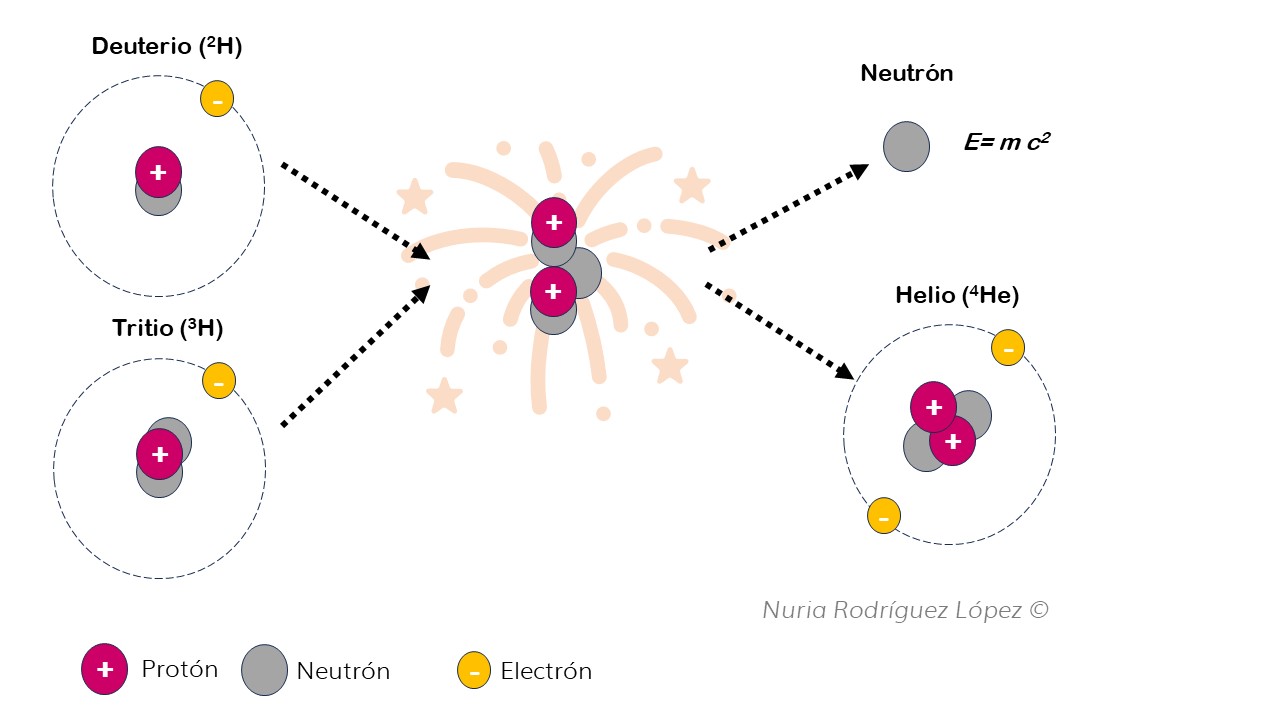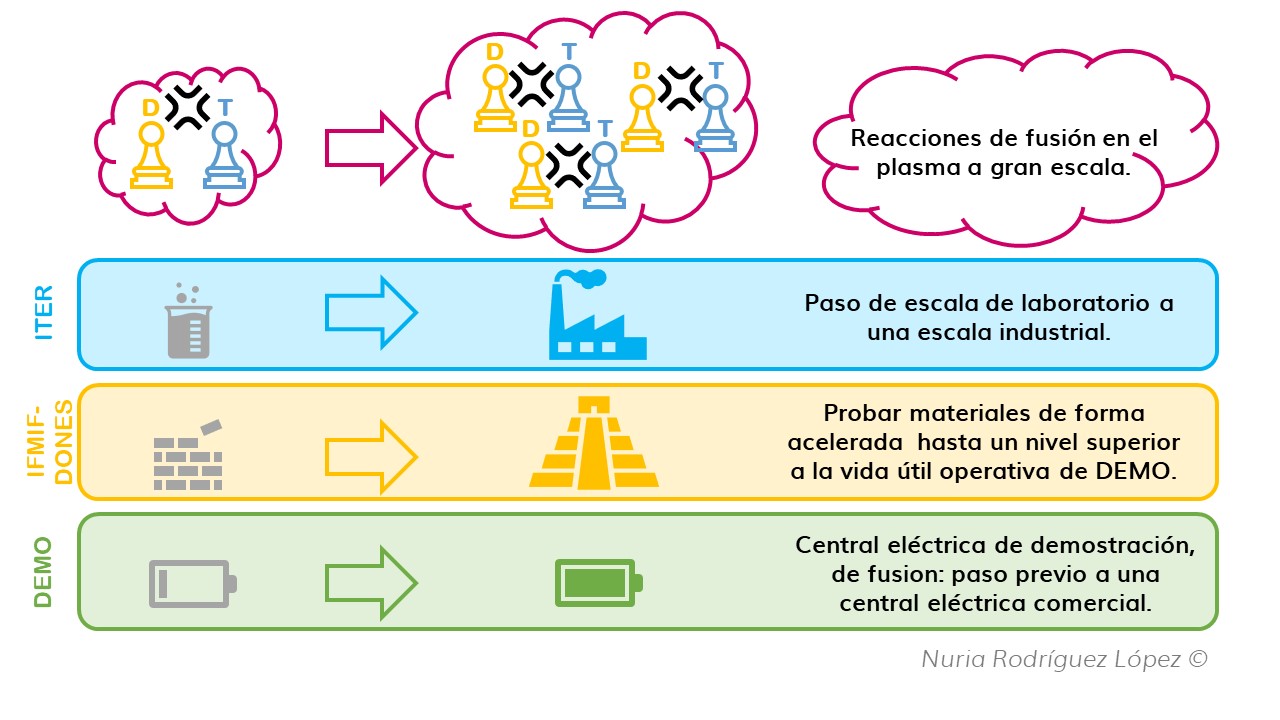
Fusion energy: The Sun and its twin
Once upon a time…
…a star called Sun that had a lot of energy. The Sun woke up every day and worked hard so that each of his colleagues in the company "solar system" where they worked could continue their work in their respective production lines. The Sun never complained and always gave his best. In fact, he rarely asked for anything in return, but one day he was more tired than usual and told his blue, watery and predisposed Earth companion about it.
The Sun said: "Earth, I have been working for more than 4.6 billion years without rest and without complaining, but I think I need help or someone who can give me a relief. I'm starting to feel tired, I feel like I'm in the middle of my life...".
And the Earth, animated but uneasy, responded: "Sun, don't worry, it's normal to have this kind of existential crisis. You've been working for a long time, but I'll talk to my team and I'm sure we can find a solution for you.
The Sun thanked them with a smile and so it was that a team of humans, led by Earth, decided to look for a support, a solar twin to give some "air" (hydrogen, if possible) to our guiding star.
The first need was to know how the Sun generates this energy
What do we do?
The Earth, recently certified as a Scrum Master, and making use of this agile methodology she had learned, gathered her entire team in a room and presented them with the problem. Then, looking them in the eye one by one, he asked them: "So what do we do? The whole team looked at each other, each of them raised a series of questions, doubts, and options, and with this they defined a strategy. This is the summary of their work.
How does the Sun produce energy?
The first doubt, and therefore the need, was to know how this star called Sun worked, to know what it did to generate the energy that kept everyone alive on planet Earth. Considered, in fact, as a safe, non-carbon emitting and virtually unlimited potential source of energy.
The surprise was great when it was discovered that it was a fusion (nuclear) reaction. "I beg your pardon!" was the first thing the team said to the discoverer of this event in the early 20th century. What happens inside the Sun and other stars (Figure 1) is that two "siblings" (or isotopes) of hydrogen (Deuterium and Tritium), when they meet, let's say "collide" (they love each other very much but can't stay together for very long) and as a result, a lot of energy (E) is generated - fireworks - and a close cousin called Helium (specifically, a very stable and quiet one, the Helium -4 isotope) calms the situation.

Figure 1. Melt reaction (Own elaboration).
What are the steps to make a solar cufflink?
To begin with, it is important to know under what conditions the siblings Deuterium (D) and Tritium (T) can meet without any close family members, friends or relatives suffering the consequences of such an intense relationship. The team was able to identify three key aspects that must be fulfilled in order to bring together a few Ds and Ts in a laboratory:
- Very high temperature: in the order of 150 million degrees Celsius - "slightly" higher than the temperature of human fever.
- Sufficient particle density of plasma (the state of matter where the fusion reaction takes place, which is neither solid nor liquid nor gaseous): to increase the probability of fraternal "collisions" occurring.
- Enough time of confinement: to retain the plasma so that D and T don't go their separate ways, before cousin Helio has time to bring them closer together.
The ratio of Deuterium and Tritium generates a lot of energy, so the ratio must be in a large and resistant space
Obviously, the first thing on the minds of the team responsible for realising this solar twin was that, if they wanted to bring many Ds and Ts together in a small space, it was going to take a lot of negotiation, getting to know, and creating alliances with all those who would make it possible for this intense but long-awaited family reunion to take place. Thus, the key aspects identified where certain superheroes (ITER, IFMIF-DONES and DEMO) should work are:
- Large space capable of supporting such intensity of relationship: the passage from the relationship of a few Ds and Ts (laboratory scale) to a large gang of these siblings (industrial scale). Here ITER takes the lead.
- Structure and materials resistant to the impetus of this endearing deal: as we said, the relationship of these brothers generates a lot of energy and, therefore, all the structure and materials of the building that hosts this celebration must have the necessary resistance and strength, among other issues that the experts know best. IFMIF-DONES is responsible for making this possible.
- Actual controlled proof of a mature sibling relationship: finally, it must be proven that this band of Ds and Ts can come together in a massive and civilised manner. For this purpose, DEMO will be in charge of checking the good state of the relationship.
The next step seems simple, doesn't it? At least that's what Earth must have thought, because after seeing and analysing all this, it said to its team, "Let's do it, I want the Sun's twin as soon as possible!
When will we get that solar twin?
Luckily, Earth listened carefully to the team and understood that getting that cufflink was not so simple and quick. However, as a firm advocate of the maxim that "a picture is worth a thousand words", and to encourage Sun so that she could understand the steps needed to have her cufflink, she made the following diagram (Figure 2). In this way, Earth was able to explain to the Sun the mission of each of the superheroes ITER, IFMIF-DONES and DEMO:
The first phase is expected to be operational at least by 2050
- ITER: currently responsible for carrying out the experimental transition from today's fusion facilities to tomorrow's fusion power plants.
- IFMIF-DONES: will set up a facility to generate a neutron source (simulating the energy generated on a large scale when a fusion reaction occurs) to study and license materials for future fusion reactors. It is scheduled to come into operation in 2030.
- DEMO: thanks to the work and research of the above superheroes, DEMO will succeed in having a DEMOstration power plant where electricity will be produced by fusion reactions, moving from the laboratory scale supported by science to a large-scale solution supported by industry and technology. It is estimated that at least its first phase will be in place by 2050.

Figure 2. Key pillars (superheroes) of the European Roadmap for Fusion Electricity Production (Own elaboration).
Once the explanation was over, the Earth looked at the Sun worried about what he might say. However, the Sun, with a radiant face (even more so, yes), commented: "I think I can safely wait a couple of decades, considering that it doesn't even represent 1% of my total life span, to have my own twin". And that's how Tierra and her entire team, breathing easy, were able to put their plan into action and..
That's all folks, but... this story is not over yet
And every superhero still has many battles to fight. IFMIF-DONES, for example, is currently fighting the NEURON-DONES battle with the likes of Izertis, where it is researching technologies such as artificial intelligence and quantum computing for Intelligent Operation Management in the IFMIF-DONES or DONES facility.
And that is how the Sun will live happily ever after, or at least a few billion years longer.

